Steven Bamford
Galaxy Zoo DECaLS: Detailed Visual Morphology Measurements from Volunteers and Deep Learning for 314,000 Galaxies
Feb 16, 2021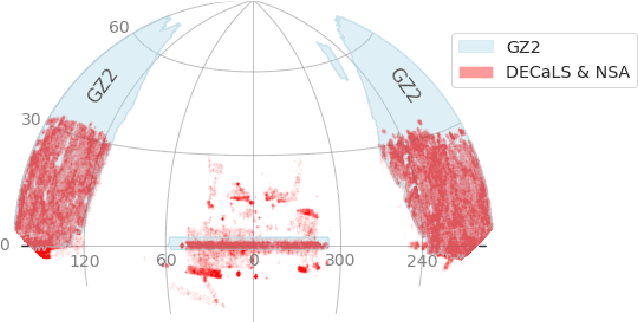
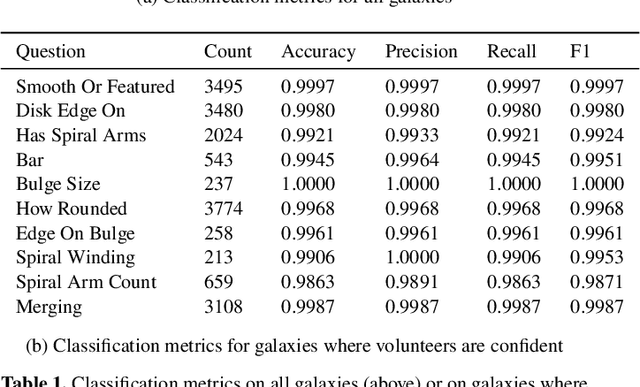
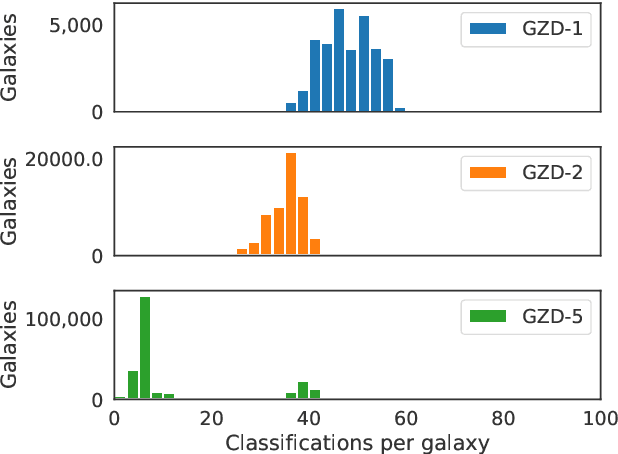
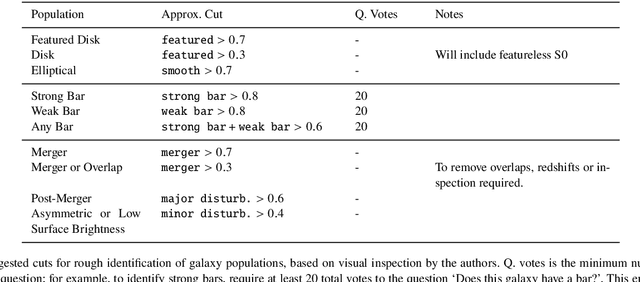
Abstract:We present Galaxy Zoo DECaLS: detailed visual morphological classifications for Dark Energy Camera Legacy Survey images of galaxies within the SDSS DR8 footprint. Deeper DECaLS images (r=23.6 vs. r=22.2 from SDSS) reveal spiral arms, weak bars, and tidal features not previously visible in SDSS imaging. To best exploit the greater depth of DECaLS images, volunteers select from a new set of answers designed to improve our sensitivity to mergers and bars. Galaxy Zoo volunteers provide 7.5 million individual classifications over 314,000 galaxies. 140,000 galaxies receive at least 30 classifications, sufficient to accurately measure detailed morphology like bars, and the remainder receive approximately 5. All classifications are used to train an ensemble of Bayesian convolutional neural networks (a state-of-the-art deep learning method) to predict posteriors for the detailed morphology of all 314,000 galaxies. When measured against confident volunteer classifications, the networks are approximately 99% accurate on every question. Morphology is a fundamental feature of every galaxy; our human and machine classifications are an accurate and detailed resource for understanding how galaxies evolve.
Galaxy Zoo: Probabilistic Morphology through Bayesian CNNs and Active Learning
May 17, 2019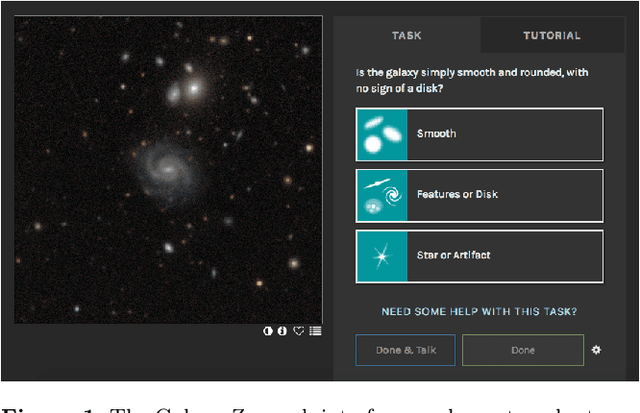

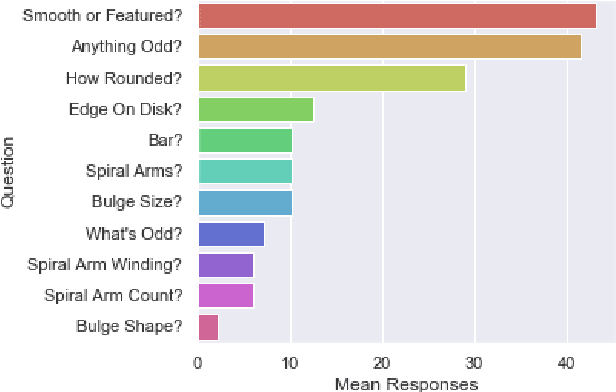

Abstract:We use Bayesian convolutional neural networks and a novel generative model of Galaxy Zoo volunteer responses to infer posteriors for the visual morphology of galaxies. Bayesian CNN can learn from galaxy images with uncertain labels and then, for previously unlabelled galaxies, predict the probability of each possible label. Our posteriors are well-calibrated (e.g. for predicting bars, we achieve coverage errors of 10.6% within 5 responses and 2.9% within 10 responses) and hence are reliable for practical use. Further, using our posteriors, we apply the active learning strategy BALD to request volunteer responses for the subset of galaxies which, if labelled, would be most informative for training our network. We show that training our Bayesian CNNs using active learning requires up to 35-60% fewer labelled galaxies, depending on the morphological feature being classified. By combining human and machine intelligence, Galaxy Zoo will be able to classify surveys of any conceivable scale on a timescale of weeks, providing massive and detailed morphology catalogues to support research into galaxy evolution.
Citizen Science: Contributions to Astronomy Research
Feb 12, 2012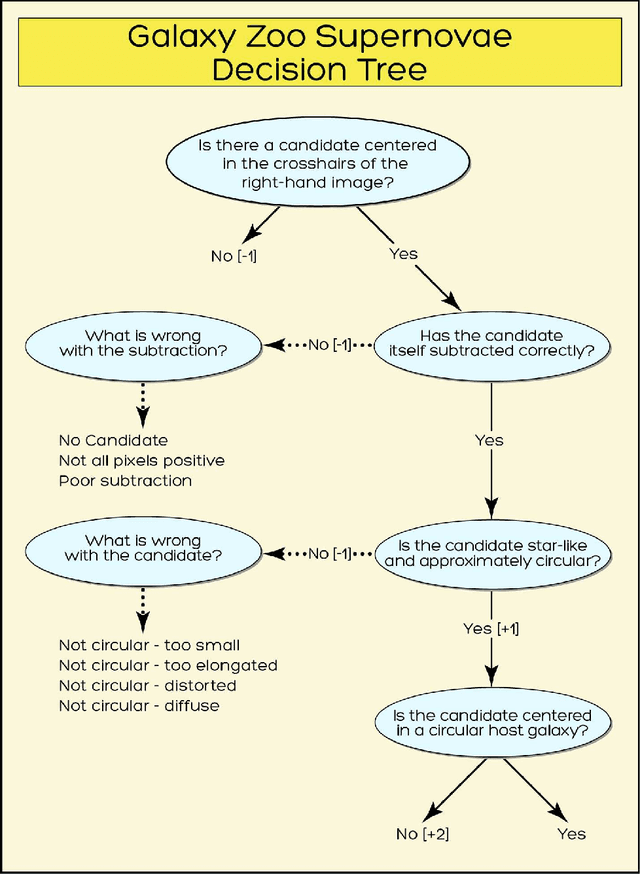
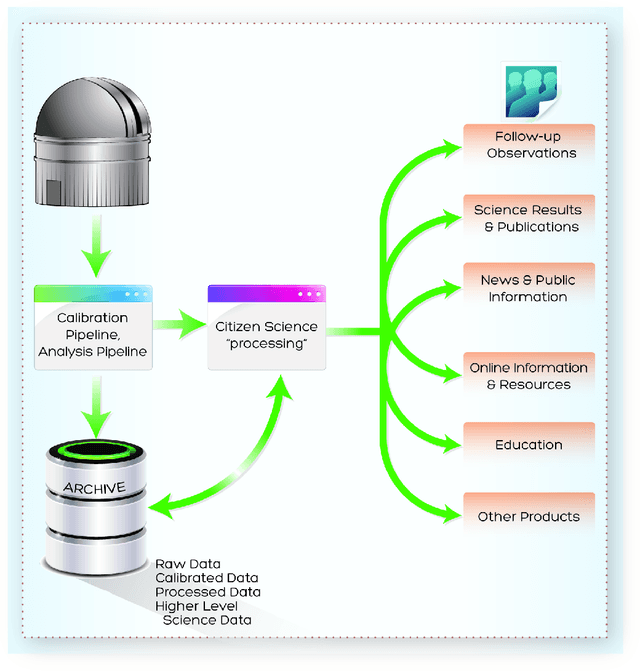
Abstract:The contributions of everyday individuals to significant research has grown dramatically beyond the early days of classical birdwatching and endeavors of amateurs of the 19th century. Now people who are casually interested in science can participate directly in research covering diverse scientific fields. Regarding astronomy, volunteers, either as individuals or as networks of people, are involved in a variety of types of studies. Citizen Science is intuitive, engaging, yet necessarily robust in its adoption of sci-entific principles and methods. Herein, we discuss Citizen Science, focusing on fully participatory projects such as Zooniverse (by several of the au-thors CL, AS, LF, SB), with mention of other programs. In particular, we make the case that citizen science (CS) can be an important aspect of the scientific data analysis pipelines provided to scientists by observatories.
 Add to Chrome
Add to Chrome Add to Firefox
Add to Firefox Add to Edge
Add to Edge